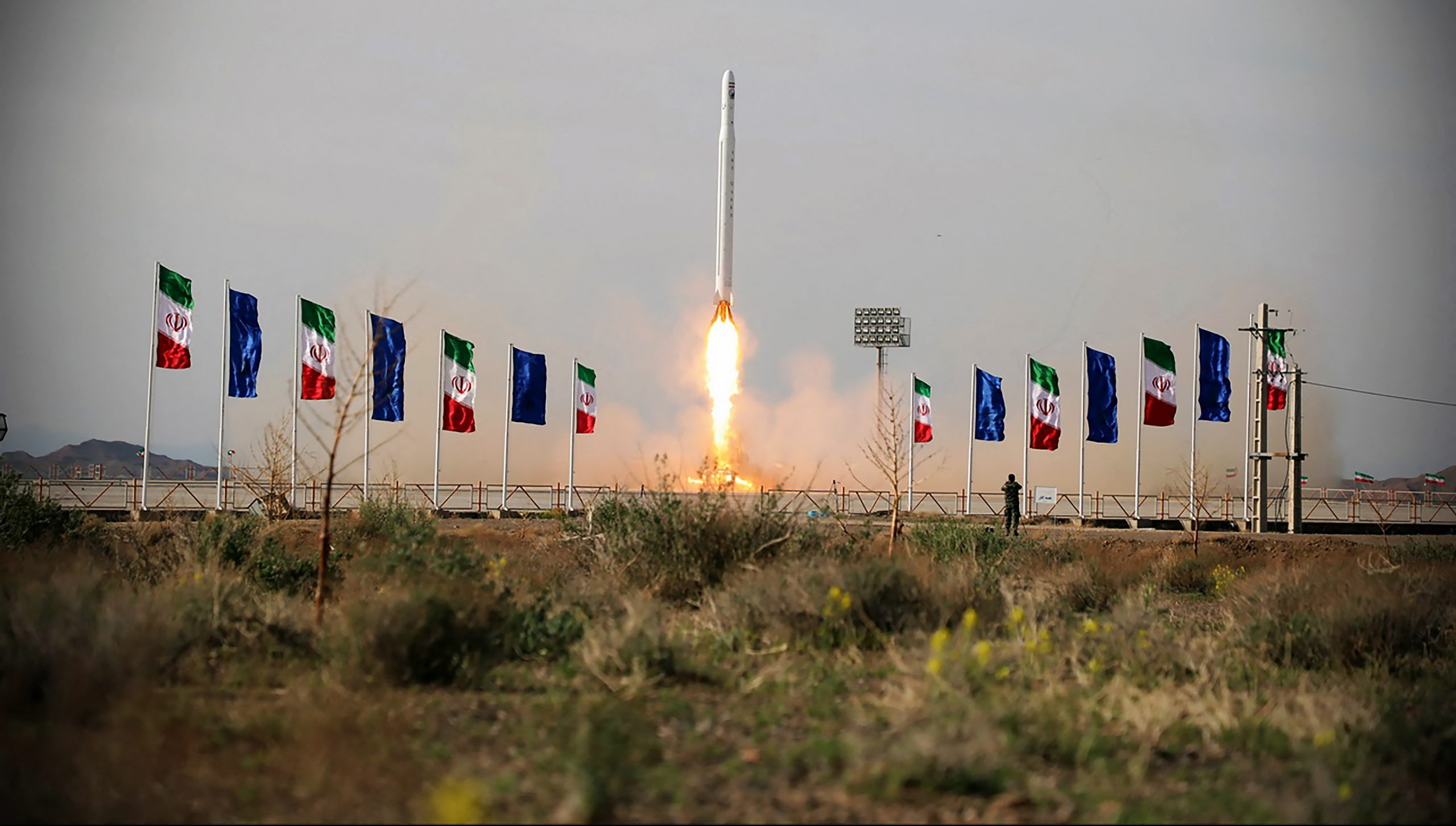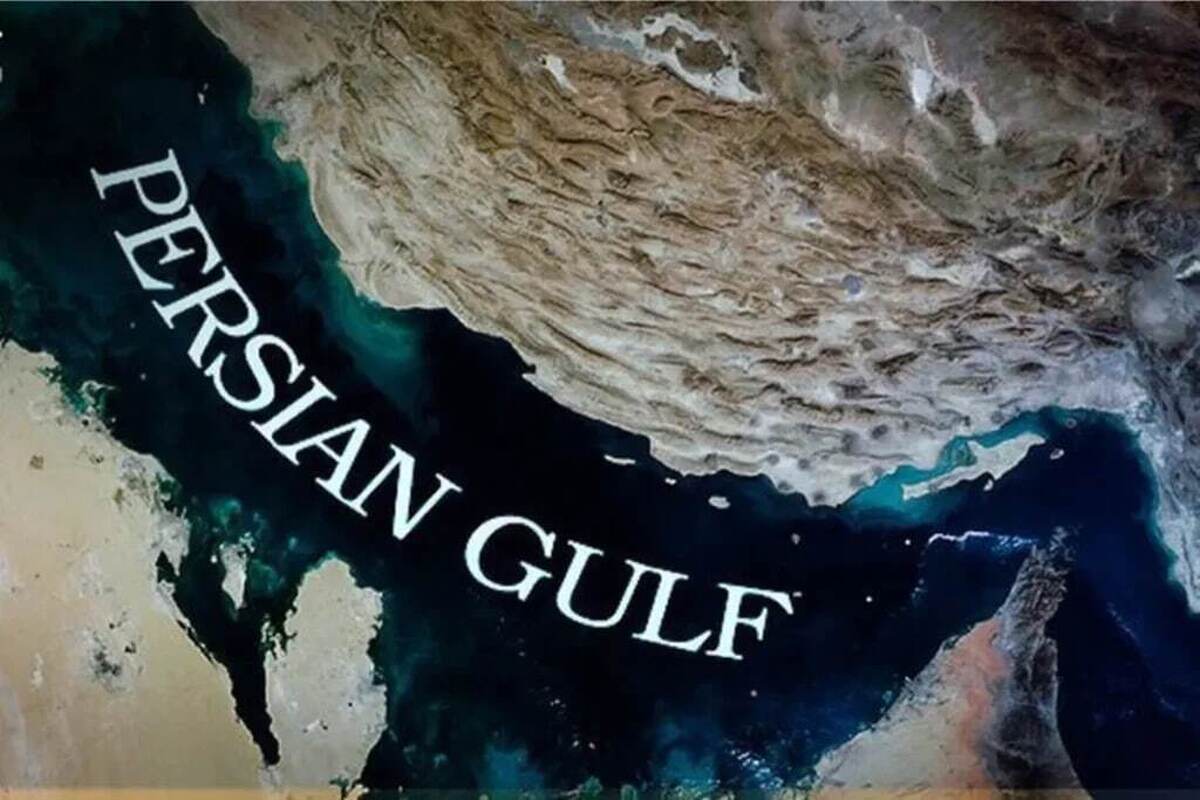
Iran’s satellite launch carries more political weight than military significance
The Islamic Revolutionary Guard Corps’ (IRGC) successful launch of the Noor (Light) satellite into space is a significant moment at a time when many countries, including Iran, are still grappling with the deadly COVID-19 virus. It marks a military advancement, an audacious move in the diplomatic poker game with Washington, and an effort to restore domestic political legitimacy after a series of blunders.
The Noor military satellite, which used a three-stage propellant, reached an orbit of 425 kilometers, earning a “code designator” by the North American Aerospace Defense Command (NORAD). Iranian state media are claiming that this is the first time that Iran has successfully “operationalized” a three-stage missile. Meanwhile, the US Space Command has classified Noor as a CubeSat, “research” spacecraft.
While Iran has sought to portray failed, past satellite launches as civilian in nature, Iranian officials have made it clear that Noor has military purposes. The Space Commander of the IRGC Aerospace Force, Brigadier General Ali Jafarabadi, told Iranian State TV that the primary mission of Noor is “reconnaissance,” but that its secondary missions include “navigation and military communications.” Jafarabadi also noted that “In [our] defense field we should be aware of our situation and our surroundings…the sensors that have been installed on this satellite do the job for us.”
Another IRGC top commander, Ali Hajizadeh, whose units accidentally shot down a Ukrainian passenger aircraft in January—they mistook it for a hostile US missile—proclaimed that “gaining access to space and using it is not a choice. It is an inevitable necessity and we must find our place in space.”
In the past, Iran’s failed satellite launches were conducted by Iran’s Space Agency, which was founded to “coordinate and publicize the nation’s space efforts.” Hence, this is the first time that the IRGC has launched a military satellite into orbit.
US defense officials called the launch a “provocation” and Secretary of State Mike Pompeo, a staunch critic of the Joint Comprehensive Plan of Action (JCPOA), accused Iran of violating UN Security Council Resolution 2231, which endorsed the JCPOA. Pompeo, who, reportedly, is considering snapping back all UN sanctions on Iran that were lifted by the resolution—even though the US withdrew unilaterally from the JCPOA—vowed to “hold Iran accountable.” Brian Hook, the State Department’s Special Representative for Iran, also, asserted that “Iran’s space program is clearly a cover for its intercontinental ballistic missile (ICBM) aspirations.”
As a 2019 Defense Intelligence Agency report notes, expertise in Space-Launch Vehicles (SLVs) can be used “as a test bed for developing [an] ICBM.” However, Michael Elleman, an expert on missiles at the International Institute for Strategic Studies, has argued thata satellite launch is not tantamount to an ICBM test because of some technological differences. Elleman has further noted that the Qassed (Messenger) rocket, which propelled Noor into orbit, could have a range of a little more than 2000 km if it was repurposed. This is generally consistent with Iranian officials’ previous statements that Iran has voluntarily limited the range of its ballistic missiles to 2000 kms.
Fabian Hinz of the James Martin Center for Nonproliferation Studies argues that the Qassed is “too limited in performance to serve as an ICBM with any reasonable payload.” Meanwhile, General Jay Raymond, the Chief of Staff of Space Operations, downplayed the military significance of Noor by tweeting on April 25 that “Iran states it has imaging capabilities—actually, it’s a tumbling webcam in space; unlikely providing intel.”
These assessments could further strengthen the idea that the satellite launch carries more political weight than military significance.
While the deployment of the satellite is a significant technological breakthrough for Iran after several attempts that may have been sabotaged by the US and/or Israel, the IRGC’s move should be analyzed more in terms of Tehran’s political posturing instead of as a strategic leap toward developing ICBMs. Since the Trump administration’s decision to re-impose economic sanctions on Iran, Tehran has upped the ante by reducing its own compliance under the nuclear deal, confiscating oil tankers in the Persian Gulf, and, in the aftermath of the US assassination of Quds Force leader General Qasem Soleimani, has attacked American forces in Iraq, using indigenously developed ballistic missiles.
In essence, it seems that Iran feels that it must not show weakness under tremendous pressure. It is noteworthy that the virus-stricken country is taking advantage of Washington’s own preoccupation with the pandemic to flex its muscles. Launching a military satellite into space and using mobile launchers that are harder to detect can send a strong political message to Washington.
The IRGC’s satellite launch can also be viewed in terms of the Guard’s broader campaign to recapture some domestic legitimacy after a series of devastating political and intelligence blunders, which have left an indelible mark on its reputation as a military organization. The accidental shooting of the Ukrainian passenger plane in the fog of war of the January 2020 crisis and subsequent attempts at a cover-up are cases in point. IRGC officials have tried to revamp and tie the satellite launch to the potent force of Iranian nationalism, calling it a “national” achievement.
One should further not discount the fact that creating an advanced “indigenous” technology is quite significant for a developing country, such as Iran. Hossein Dalirian, former director of the IRGC-affiliated Tasnim News’ Defense Desk, writes that “many countries do not have such technological capacities and have to beg world powers such as the United States to provide them with communications and, even, imagery from space, which is very expensive.”
Narges Bajoghli, an expert on the IRGC and a professor of Middle East Studies at the Johns Hopkins University‘s School of Advanced International Studies, has argued that “Over the last decade, they [IRGC] have refocused their media production on depicting how the guards protected Iran from outside aggression, moving religious symbols to the background.”
In the aftermath of the satellite launch, an IRGC-affiliated outlet published a poster with the caption reading: “Today, we can monitor the world from space and this means expanding the strategic intelligence of the powerful IRGC defensive force. We will not accept any limits in strengthening the country and our nation and will innovate any legitimate tool.”
To better understand Iran’s move, one must keep in mind that, for Iranians, the line between national security on the one hand, and pride and a sense of victimhood on the other, is blurry. In other words, a proud and independent Iran must also be strong. Joining the club of “advanced” countries with the capability to launch satellites—albeit, in its early stages—is important for Iranians. Thus, under economic strangulation by the United States, Iran has managed to send a clear message that it will not yield under pressure.
Sina Azodi is a non-resident fellow at the Atlantic Council. He is also a foreign policy advisor at Gulf State Analytics, and a PhD candidate in international relations at the University of South Florida, where he focuses on Iran’s nuclear program. Follow him on Twitter: @azodiac83.
Source: Atlantic Council



